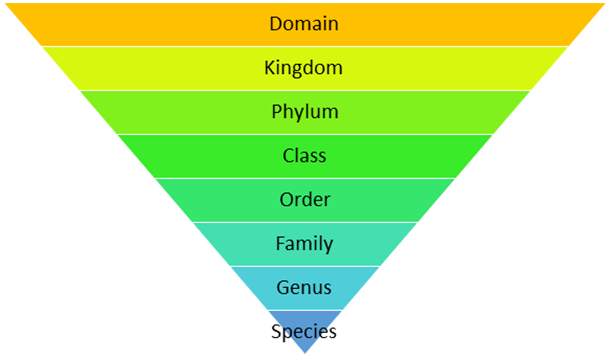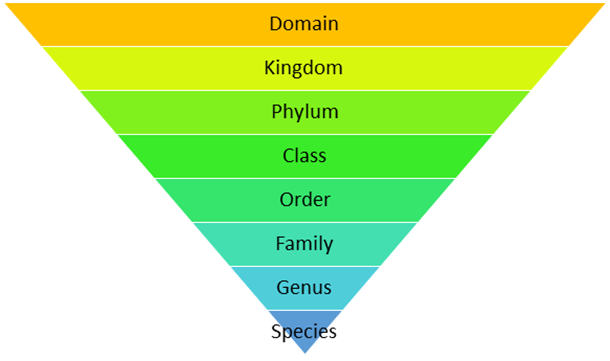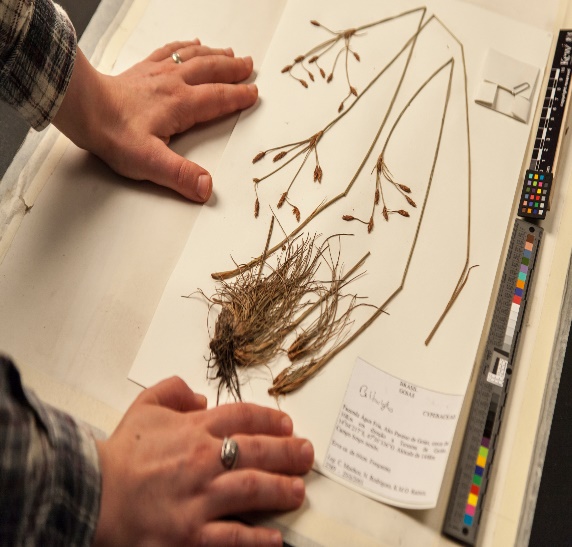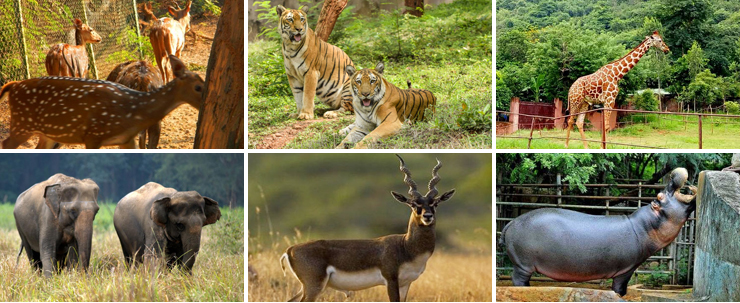What is living?
Chapter 1
The living world
What is living?
Biology is the study of biological organisms and processes. There is an incredible diversity of living organisms around the globe. Any system capable of executing processes including feeding, metabolizing, excreting, breathing, moving, growing, reproducing, and responding to external stimuli is characterized as living. Living refers to anything that exhibits the attributes of life. Growth, reproduction, metabolism, cellular organization, and consciousness are the basic features of life. On the other hand, self-consciousness is seen as the defining quality of living organisms. Let us take a detailed look at all the unique features of living organisms.
(A) Growth:
Growing is a process that occurs in all living creatures. The twin features of growth are an increase in bulk and an increase in the number of individuals. Cell division is a process that enables a multicellular organism to grow. Plants grow by the division of cells constantly throughout their lives. This growth is only visible in animals up to a particular age. Cell division, on the other hand, happens in some tissues to replace lost cells. Cell division is responsible for the growth of unicellular creatures. Growth and reproduction are mutually exclusive phenomena in the majority of higher animals and plants. It's important to note that growth is defined as a rise in bodily mass.
If we use body mass as a criterion for growth, non-living objects grow as well. Mountains, boulders, and sand mounds are all formed through erosion. Non-living objects, on the other hand, demonstrate this type of growth by accumulating material on the surface. Growth occurs from the inside out in living organisms. As a result, growth cannot be considered the only distinguishing characteristic of living beings. It must be described under what conditions it can be observed in all live species before we can grasp that it is a property of living systems. A dead creature can’t grow.
(B) Reproduction:
In multicellular organisms, reproduction refers to the generation of offspring with characteristics that are comparable to those of their parents. It refers to sexual reproduction invariably and implicitly. Asexual reproduction is also used by living species. Fungi, for example, can quickly proliferate and spread because they produce millions of asexual spores. We see budding in smaller species like yeast and hydra. True regeneration is observed in Planaria (flatworms), in which a fractured organism regenerates the missing section of its body and transforms into a new creature. Filamentous algae and moss protonema may all easily reproduce through fragmentation. In unicellular organisms such as bacteria, unicellular algae, and Amoeba, reproduction takes place through cell division (fission) which is synonymous with growth, or an increase in the number of cells.
Growth has already been characterized as a rise in cell number or mass. As a result, we find that the definitions of these two terms – growth and reproduction – are not always apparent in single-celled organisms. Furthermore, a large number of species do not reproduce (mules, sterile worker bees, infertile human couples, etc). As a result, reproduction alone cannot be considered a universal distinguishing trait of living entities. Of course, no non-living object can reproduce or replicate on its own.
(C) Metabolism:
Chemicals are found in all living things. Small and large compounds of diverse classes, sizes, functionalities, and other characteristics are constantly created and transformed into new biomolecules. Chemical or metabolic reactions are involved in these transformations. All living creatures, whether unicellular or multicellular, have millions of metabolic events going on at the same time. Metabolism is found in all plants, animals, fungi, and microorganisms. Metabolism is the sum of all chemical events that take place in our bodies. Metabolism does not exist in non-living objects.In cell-free systems, metabolic events can be demonstrated outside of the body. An isolated metabolic reaction(s) performed in a test tube outside the body of an organism is neither life nor non-living. While metabolism is a defining property of all living organisms, isolated metabolic reactions, referred to as in vitro, are not live objects but living reactions. As a result, the body's cellular organization is a fundamental defining property of all life forms.
(D) Self-consciousness:
The ability of all living organisms to detect their surroundings or environment and respond to these environmental stimuli, which can be physical, chemical, or biological, is perhaps the most evident and technically complex attribute. Our sense organs allow us to perceive our surroundings. External elements such as light, water, temperature, other species, contaminants, and so on affect plants. Environmental signals can be sensed and responded to by all species, from prokaryotes to the most complex eukaryotes. Seasonal breeders, both plants and animals, are affected by photoperiod. Chemicals that enter an organism's body are dealt with in the same way by all species. As a result, all organisms are 'conscious' of their surroundings. Humans are the only organisms that are aware of themselves or have self-consciousness.As a result, consciousness becomes the defining characteristic of living beings.
Underlying interactions are responsible for all life phenomena. Tissue properties are not found in the constituent cells but emerge as a result of interactions between them. Similarly, features of cellular organelles are not contained in the organelle's molecular elements but occur as a result of interactions among the organelle's molecular components. Emergent features emerge at a higher level of organization as a result of these interactions. This phenomenon occurs at all levels of the organizational complexity hierarchy.
As a result, living creatures can be described as self-replicating, evolving, and self-regulating interacting systems that can respond to external inputs. The narrative of life on Earth is told via biology. Biology is the study of how living species have evolved on our planet. All living species, present, past, and future, are related to one another to differing degrees via the sharing of similar genetic material.
Need for classification.
Diversity in the living world
The biological variety and variability of life on Earth are referred to as biodiversity. Looking around, one will see a wide range of living organisms, including potted plants, insects, birds, pets, and other animals and plants. Other species are invisible to the naked sight but are all around us. A species is represented by each different type of plant, animal, or organism you see. Between 1.7 and 1.8 million species have been identified and described. This refers to the diversity of species on the planet or the quantity and varieties of creatures that exist.
There are millions of plants and animals throughout the world that are known by their regional names. These regional names might differ from one location to the next, even within a country. When referring to organisms, such names can cause confusion. As confuse necessary to standardize the naming of living entities so that they are known by the same name all over the world. This is referred to as nomenclature.
This naming or nomenclature is only achievable if the organism is correctly characterized and we know to which organism the term refers. This is calledidentification.
Scientists have developed processes to assign a scientific name to each known organism in ordering the process. Scientific names for plants are determined by agreed-upon principles and criteria outlined in the International Code for Botanical Nomenclature (ICBN). Taxonomists have developed the International Code of Zoological Nomenclature (ICZN) for animals. Each creature has just one name thanks to the scientific names. Any organism's description should allow anyone (from all over the world) to come up with the same name. They also check to see if the name has been used for any other organism.
To give known creatures scientific names, biologists use broadly accepted rules. Each name is made up of two parts: a generic name and a specific epithet. Binomial nomenclature is a system for naming organismsconsisting of two parts. Carolus Linnaeus devised a naming system that is used by biologists all around the world. He is also known as the Father of Taxomy. This two-name approach was proven to be convenient.Mangiferaindica is the scientific name for the mango where, Mangifera denotes the genus, while indica denotes a specific species or epithet. The following are the universal rules of nomenclature:
1. Biological names are usually written in italics and written in Latin. Regardless of their origin, they are Latinized or derived from Latin.
2. In a biological name, the first component identifies the genus, whereas the second component denotes the specific epithet.
3. In handwriting, both words in a biological name are underlined or typed in italics to reflect their Latin origin.
4. The genus name begins with a capital letter, but the particular epithet begins with a tiny letter.
The author's name occurs after the specific epithet, i.e., the after the zoological name, and is shortened, e.g., Mangiferaindica Linn. It denotes that Linnaeus was the first to describe this species.
Classification is the procedure of grouping things into useful categories based on plainly observable characteristics. Plants and animals, as well as dogs, cats, and insects, are easily identifiable. These phrases link certain characteristics to the organisms in that group. When we talk about mammals,' we're talking about animals with external ears and body hair. As a result, terminology like "Dogs," "Cats," "Mammals," "Wheat," "Rice," "Plants," and "Animals," among others, are useful categories for studying creatures. Taxa is the scientific word for these classifications. A taxon can denote a variety of categories at various levels. Plants are classified as a taxon. 'Wheat' is a taxon as well. 'Animals,' 'Mammals,' and 'Dogs,' for example, are all taxa. As a result, the terms 'animals,"mammals,' and 'dogs' all refer to taxa at various levels.
As a result, all living species can be divided into different taxa based on their properties. Taxonomy is the term for this classifying procedure. The external and internal structure of organisms, as well as cell structure, development process, and ecological information, are essential and form the basis of modern taxonomic investigations. As a result, the fundamental stages of taxonomy are characterization, identification, categorization, and nomenclature. Humans, fora long, have been learning more about different types of organisms, particularly concerning their own Hence, the early classifications were based on the diverse utilities of organisms.
Humans have long been fascinated not only by diverse types of species and their diversity but also by the links that exist between them. The term "systematics" was coined to describe this field of study. The name "systematics" comes from the Latin word "systema," which means "an orderly arrangement of organisms." The title of Linnaeus' publication was SystemaNaturae. Identification, naming, and classification was later added to the scope of systematics. Systematics is the study of organisms' evolutionary relationships.
Biodiversity.
Taxonomic Categories
Classification is not a one-step procedure, but rather a series of stages, each representing a rank or category. The category is called a taxonomic category because it is a part of the larger taxonomic arrangement, and all categories combined make up the taxonomic hierarchy. Each category, also known as a classification unit, indicates a rank and is frequently referred to as a taxon (plural taxa). A taxonomic category is a category that is part of a taxonomic arrangement, and all categories combined make up the taxonomic hierarchy. Thus, organisms are divided into kingdoms, phyla or divisions, classes, orders, families, genera, and species.
Insects are a group of organisms with three pairs of jointed legs and other characteristics in common. It indicates that insects are recognizable concrete objects that can be categorized and so have a rank or category assigned to them. The categories are represented by groups of people. Rank is also indicated by category. Each rank, or taxon, is a classification unit. These taxonomic groups/categories are biological entities in their own right, not just morphological aggregations.
The establishment of common categories such as kingdom, phylum or division (for plants), class, order, family, genus, and species have resulted from taxonomic investigations of all known organisms. Species is the lowest level of classification for all organisms, including those in the plant and animal kingdoms. The knowledge of characteristics of an individual or group of organisms is required to categorize an organism into distinct categories. This aids in the identification of similarities and differences between individuals of the same species as well as individuals of different species.
Let us take a detailed look at different taxonomic categories:
(A)Species: A species is a group of individual beings that share fundamental characteristics. Based on morphological features, one species is separated from other closely related species. Mangiferaindica, Solanum tuberosum (potato), and Pantheraleo are just a few examples (lion). The first three words, Mangifera, Solanum, and Panthera, are genera and denote a higher level of taxon or category, while the first three words, indica, tuberosum, and leo, are specific epithets. Each genus may have one or more specific epithets that refer to various creatures that share morphological characteristics. Panthera, for example, has the specific epithet tigris, and Solanum comprises species such as nigrum and melongena. Humans are members of the species sapiens, which is part of the genus Homo.As a result, the scientific designation for a human being is Homo sapiens. Species is regarded as the least inclusive and highly specific category of the taxonomic hierarchy.
(B) Genus: A genus is a collection of related species that share more characteristics than those from other genera. Genera can be defined as groups of closely related species. Potato and brinjal, for example, are two separate species that both belong to the Solanum genus. Panthera species include the lion (Pantheraleo), leopard (Pantherapardus), and tiger (Pantheratigris), all of which share several characteristics. This genus is distinct from the Felis genus, which includes cats.
(C) Family:In comparison to genus and species, a family consists of a set of related genera with fewer similarities. In plants, vegetative and reproductive characteristics are used to classify them into families. Solanum, Petunia, and Datura are three separate genera of plants that belong to the Solanaceae family. The genus Panthera, which includes the lion, tiger, and leopard, is placed in the family Felidae with the genus Felis (cats). Similarly, if you compare and contrast the characteristics of a cat and a dog, you would notice some parallels and variances. Felidae and Canidae are the two different families that they belong to.
(D) Order:Species, genus, and family are all based on a set of comparable characteristics. The aggregates of characters are used to identify the order and other higher taxonomic groups. The group of families that have a few similar characteristics is called order, which is a higher category. When compared to the different genera in a family, there are fewer comparable characters. Plant groups such as Convolvulaceae and Solanaceae are classified as Polymoniales based on their floral characteristics. Carnivora is an animal order that includes families like Felidae and Canidae.
(E) Class: A class is a taxonomic rank (a taxon) that contains species with similar characteristics; it is further divided into one or more orders. A class is a major taxonomic rank below the phylum (or division) and above the order in the biological categorization of life. This category includes orders that are related. Order Primata, which includes monkeys, gorillas, and gibbons, is placed in class Mammalia alongside order Carnivora, which includes tigers, cats, and dogs. Other orders also exist in the Mammalia class.
(F) Phylum/Division:A phylum is a classification or taxonomic rank that falls between kingdom and class. The Phylum is the next higher classification, which includes animals such as fish, amphibians, reptiles, birds, and mammals. All of these are classified as members of the phylum Chordata because they share characteristics such as the presence of a notochord and a dorsal hollow neural system. Classes with a few comparable features in plants are given to a higher category called Division.
In biological classification, the division is a taxonomic rank that is employed differently in zoology and botany. The division is a level similar to a phylum in botany and mycology. The term division is used in zoology to refer to an optional rank that is subordinate to the infraclass and superordinate to the cohort.
(G) Kingdom:In the classification system of animals, all animals belonging to distinct phyla are placed in the top category, Kingdom Animalia. The Kingdom Plantae, on the other hand, is unique in that it includes all plants of diverse divisions. These two groups are today referred to as the animal and plant kingdoms.
(H) Domain:A domain is the largest of all groupings in the classification of life in biology. At this level, the Archaea domain, Bacteria domain, and Eukarya domain are the three agreed-upon categories. The domain is considered to be the most inclusive category of the hierarchy.
The amount of shared features decreases as we progress from species to kingdom. The lower the taxon, the more features the members of the taxon share. The more difficult it is to determine a taxon's relationship to other taxa at the same level, the higher the category. As a result, the classification problem gets more complicated. Therefore, the taxonomists have also created sub-categories in the hierarchy to make the placement of distinct taxa more sound and scientific.


Diversity in the Living World
Diversity in the living world
The biological variety and variability of life on Earth are referred to as biodiversity. Looking around, one will see a wide range of living organisms, including potted plants, insects, birds, pets, and other animals and plants. Other species are invisible to the naked sight but are all around us. A species is represented by each different type of plant, animal, or organism you see. Between 1.7 and 1.8 million species have been identified and described. This refers to the diversity of species on the planet or the quantity and varieties of creatures that exist.
There are millions of plants and animals throughout the world that are known by their regional names. These regional names might differ from one location to the next, even within a country. When referring to organisms, such names can cause confusion. As confuse necessary to standardize the naming of living entities so that they are known by the same name all over the world. This is referred to as nomenclature.
This naming or nomenclature is only achievable if the organism is correctly characterized and we know to which organism the term refers. This is calledidentification.
Scientists have developed processes to assign a scientific name to each known organism in ordering the process. Scientific names for plants are determined by agreed-upon principles and criteria outlined in the International Code for Botanical Nomenclature (ICBN). Taxonomists have developed the International Code of Zoological Nomenclature (ICZN) for animals. Each creature has just one name thanks to the scientific names. Any organism's description should allow anyone (from all over the world) to come up with the same name. They also check to see if the name has been used for any other organism.
To give known creatures scientific names, biologists use broadly accepted rules. Each name is made up of two parts: a generic name and a specific epithet. Binomial nomenclature is a system for naming organismsconsisting of two parts. Carolus Linnaeus devised a naming system that is used by biologists all around the world. He is also known as the Father of Taxomy. This two-name approach was proven to be convenient.Mangiferaindica is the scientific name for the mango where, Mangifera denotes the genus, while indica denotes a specific species or epithet. The following are the universal rules of nomenclature:
1. Biological names are usually written in italics and written in Latin. Regardless of their origin, they are Latinized or derived from Latin.
2. In a biological name, the first component identifies the genus, whereas the second component denotes the specific epithet.
3. In handwriting, both words in a biological name are underlined or typed in italics to reflect their Latin origin.
4. The genus name begins with a capital letter, but the particular epithet begins with a tiny letter.
The author's name occurs after the specific epithet, i.e., the after the zoological name, and is shortened, e.g., Mangiferaindica Linn. It denotes that Linnaeus was the first to describe this species.
Classification is the procedure of grouping things into useful categories based on plainly observable characteristics. Plants and animals, as well as dogs, cats, and insects, are easily identifiable. These phrases link certain characteristics to the organisms in that group. When we talk about mammals,' we're talking about animals with external ears and body hair. As a result, terminology like "Dogs," "Cats," "Mammals," "Wheat," "Rice," "Plants," and "Animals," among others, are useful categories for studying creatures. Taxa is the scientific word for these classifications. A taxon can denote a variety of categories at various levels. Plants are classified as a taxon. 'Wheat' is a taxon as well. 'Animals,' 'Mammals,' and 'Dogs,' for example, are all taxa. As a result, the terms 'animals,"mammals,' and 'dogs' all refer to taxa at various levels.
As a result, all living species can be divided into different taxa based on their properties. Taxonomy is the term for this classifying procedure. The external and internal structure of organisms, as well as cell structure, development process, and ecological information, are essential and form the basis of modern taxonomic investigations. As a result, the fundamental stages of taxonomy are characterization, identification, categorization, and nomenclature. Humans, fora long, have been learning more about different types of organisms, particularly concerning their own Hence, the early classifications were based on the diverse utilities of organisms.
Humans have long been fascinated not only by diverse types of species and their diversity but also by the links that exist between them. The term "systematics" was coined to describe this field of study. The name "systematics" comes from the Latin word "systema," which means "an orderly arrangement of organisms." The title of Linnaeus' publication was SystemaNaturae. Identification, naming, and classification was later added to the scope of systematics. Systematics is the study of organisms' evolutionary relationships.
Taxonomic Categories
Taxonomic Categories
Classification is not a one-step procedure, but rather a series of stages, each representing a rank or category. The category is called a taxonomic category because it is a part of the larger taxonomic arrangement, and all categories combined make up the taxonomic hierarchy. Each category, also known as a classification unit, indicates a rank and is frequently referred to as a taxon (plural taxa). A taxonomic category is a category that is part of a taxonomic arrangement, and all categories combined make up the taxonomic hierarchy. Thus, organisms are divided into kingdoms, phyla or divisions, classes, orders, families, genera, and species.
Insects are a group of organisms with three pairs of jointed legs and other characteristics in common. It indicates that insects are recognizable concrete objects that can be categorized and so have a rank or category assigned to them. The categories are represented by groups of people. Rank is also indicated by category. Each rank, or taxon, is a classification unit. These taxonomic groups/categories are biological entities in their own right, not just morphological aggregations.
The establishment of common categories such as kingdom, phylum or division (for plants), class, order, family, genus, and species have resulted from taxonomic investigations of all known organisms. Species is the lowest level of classification for all organisms, including those in the plant and animal kingdoms. The knowledge of characteristics of an individual or group of organisms is required to categorize an organism into distinct categories. This aids in the identification of similarities and differences between individuals of the same species as well as individuals of different species.
Let us take a detailed look at different taxonomic categories:
(A)Species: A species is a group of individual beings that share fundamental characteristics. Based on morphological features, one species is separated from other closely related species. Mangiferaindica, Solanum tuberosum (potato), and Pantheraleo are just a few examples (lion). The first three words, Mangifera, Solanum, and Panthera, are genera and denote a higher level of taxon or category, while the first three words, indica, tuberosum, and leo, are specific epithets. Each genus may have one or more specific epithets that refer to various creatures that share morphological characteristics. Panthera, for example, has the specific epithet tigris, and Solanum comprises species such as nigrum and melongena. Humans are members of the species sapiens, which is part of the genus Homo.As a result, the scientific designation for a human being is Homo sapiens. Species is regarded as the least inclusive and highly specific category of the taxonomic hierarchy.
(B) Genus: A genus is a collection of related species that share more characteristics than those from other genera. Genera can be defined as groups of closely related species. Potato and brinjal, for example, are two separate species that both belong to the Solanum genus. Panthera species include the lion (Pantheraleo), leopard (Pantherapardus), and tiger (Pantheratigris), all of which share several characteristics. This genus is distinct from the Felis genus, which includes cats.
(C) Family:In comparison to genus and species, a family consists of a set of related genera with fewer similarities. In plants, vegetative and reproductive characteristics are used to classify them into families. Solanum, Petunia, and Datura are three separate genera of plants that belong to the Solanaceae family. The genus Panthera, which includes the lion, tiger, and leopard, is placed in the family Felidae with the genus Felis (cats). Similarly, if you compare and contrast the characteristics of a cat and a dog, you would notice some parallels and variances. Felidae and Canidae are the two different families that they belong to.
(D) Order:Species, genus, and family are all based on a set of comparable characteristics. The aggregates of characters are used to identify the order and other higher taxonomic groups. The group of families that have a few similar characteristics is called order, which is a higher category. When compared to the different genera in a family, there are fewer comparable characters. Plant groups such as Convolvulaceae and Solanaceae are classified as Polymoniales based on their floral characteristics. Carnivora is an animal order that includes families like Felidae and Canidae.
(E) Class: A class is a taxonomic rank (a taxon) that contains species with similar characteristics; it is further divided into one or more orders. A class is a major taxonomic rank below the phylum (or division) and above the order in the biological categorization of life. This category includes orders that are related. Order Primata, which includes monkeys, gorillas, and gibbons, is placed in class Mammalia alongside order Carnivora, which includes tigers, cats, and dogs. Other orders also exist in the Mammalia class.
(F) Phylum/Division:A phylum is a classification or taxonomic rank that falls between kingdom and class. The Phylum is the next higher classification, which includes animals such as fish, amphibians, reptiles, birds, and mammals. All of these are classified as members of the phylum Chordata because they share characteristics such as the presence of a notochord and a dorsal hollow neural system. Classes with a few comparable features in plants are given to a higher category called Division.
In biological classification, the division is a taxonomic rank that is employed differently in zoology and botany. The division is a level similar to a phylum in botany and mycology. The term division is used in zoology to refer to an optional rank that is subordinate to the infraclass and superordinate to the cohort.
(G) Kingdom:In the classification system of animals, all animals belonging to distinct phyla are placed in the top category, Kingdom Animalia. The Kingdom Plantae, on the other hand, is unique in that it includes all plants of diverse divisions. These two groups are today referred to as the animal and plant kingdoms.
(H) Domain:A domain is the largest of all groupings in the classification of life in biology. At this level, the Archaea domain, Bacteria domain, and Eukarya domain are the three agreed-upon categories. The domain is considered to be the most inclusive category of the hierarchy.
The amount of shared features decreases as we progress from species to kingdom. The lower the taxon, the more features the members of the taxon share. The more difficult it is to determine a taxon's relationship to other taxa at the same level, the higher the category. As a result, the classification problem gets more complicated. Therefore, the taxonomists have also created sub-categories in the hierarchy to make the placement of distinct taxa more sound and scientific.


Taxonomical Aids
Taxonomic Aids
Taxonomic studies of various plant, animal, and other organism species are useful in agriculture, forestry, and industry, and they aid in our understanding of biodiversity. These studies necessitate accurate organism taxonomy and identification. Identifying organisms necessitates extensive laboratory and field research. Taxonomic aids are collections of samples or preserved species that aid in the extended investigation for taxonomic hierarchy identification. The primary source of taxonomic studies is the collection of genuine specimens of plant and animal species. These are also necessary for systematics training and are crucial to studies. It's used to classify organisms, and the data acquired is saved alongside the specimens. In some situations, the specimen is saved for further research. Some popular taxonomic aids are discussed below
(I) Herbarium: A herbarium is a reference collection of properly selected and dried plants that are connected to standard-sized paper sheets and filed systematically so that they can be quickly found for study. It's a repository for plant specimens that have been collected, dried, pressed, and preserved on sheets. These sheets are organized according to a widely accepted classification scheme. These specimens, coupled with their descriptions on herbarium sheets, form a repository or storehouse for future use. A label on the herbarium sheets provides information such as the date and location of collection, English, local, and botanical names, family, and collector's name, among other things. In taxonomic investigations, herbaria also function as rapid referral systems.
The Museum of Natural History in Paris, The Royal Botanic Gardens in Kew, England, The New York Botanical Garden, and The Komarov Botanical Institute in St. Petersburg, Russia, have some of the world's largest herbaria, each having 7 to 9.5 million specimens.




Figure 3: Different stages of herbarium preparation.
(II) Botanical Gardens:
For reference, these specialty gardens have collections of living plants. Plant species are planted in these gardens for identification, and each plant is labeled with its botanical/scientific name as well as its family. Botanical gardens commit their resources to plant research and conservation, as well as public awareness of the world's plant diversity. Royal Botanical Garden, Kew (England), Indian Botanical Garden, Howrah (India), and National Botanical Research Institute, Lucknow are all well-known botanical gardens.
(III) Museum:
A museum is a building where historical, artistic, or scientific objects are displayed, maintained, or researched. Modern museums are designed to collect, preserve, interpret, and show objects of aesthetic, cultural, or scientific significance for public study and education. Biological museums are most commonly found at educational institutions like schools and colleges. For study and reference, museums have collections of preserved plant and animal specimens. Preservative solutions are used to preserve specimens in containers or jars. Dry specimens of plants and animals can also be preserved. After capturing, killing, and pinning insects, they are kept in insect boxes. Stuffed and preserved larger creatures, such as birds and mammals, are common. Animal skeletons are frequently shown in museums.With 19 museums and galleries, the National Zoological Park, and many examination stations, the Smithsonian is the world's largest exploration and museum complex. The company's headquarters are in Washington, D.C.

(IV) Zoological Parks:
Zoological parks are protected areas where animals are kept under human supervision and cared for. In zoological parks, many endangered species that are on the verge of extinction are rescued. These are facilities where wild animals are housed in safe conditions under human supervision so that we can learn about their eating habits, behavior, etc. Animals at zoos are kept in settings that are as close to their natural habitats as possible. These parks also contribute to the preservation of the natural balance by increasing the percentage of rainfall. They play a critical role in the conservation of animals. There are a total of 164 zoological parks in India. The Arignar Anna Zoological Park in Chennai is India's largest zoological park covering about 1300 acres with rare species of flora and fauna.

(V) Key:
Keys are used foridentifying and classifying various plants and animals based on their similarities and variances in characteristics. As a result, only one is accepted while the other is rejected. A lead is a name given to each assertion in the key. For identification purposes, separate taxonomic keys are necessary for each taxonomic group such as family, genus, and species. The majority of keys are analytical these are used to distinguish between classes, orders, families, genera, and species. It is split into pairs of characters that are either present or absent.
Other methods of recording descriptions include flora, manuals, monographs, and catalogs. They also assist with proper identification. Flora includes a detailed description of a certain area's habitat and plant distribution. These provide an index to the plant species that can be found in a certain area. A Catalogue is a comprehensive list, pamphlet, or register that contains a collection of traits and their variants found in diverse taxa.Manuals are important for identifying the names of species that can be found in a given area. Monographs are documents that focus on a single taxon.

 AACHARYA KOTA CLASSES
AACHARYA KOTA CLASSES
